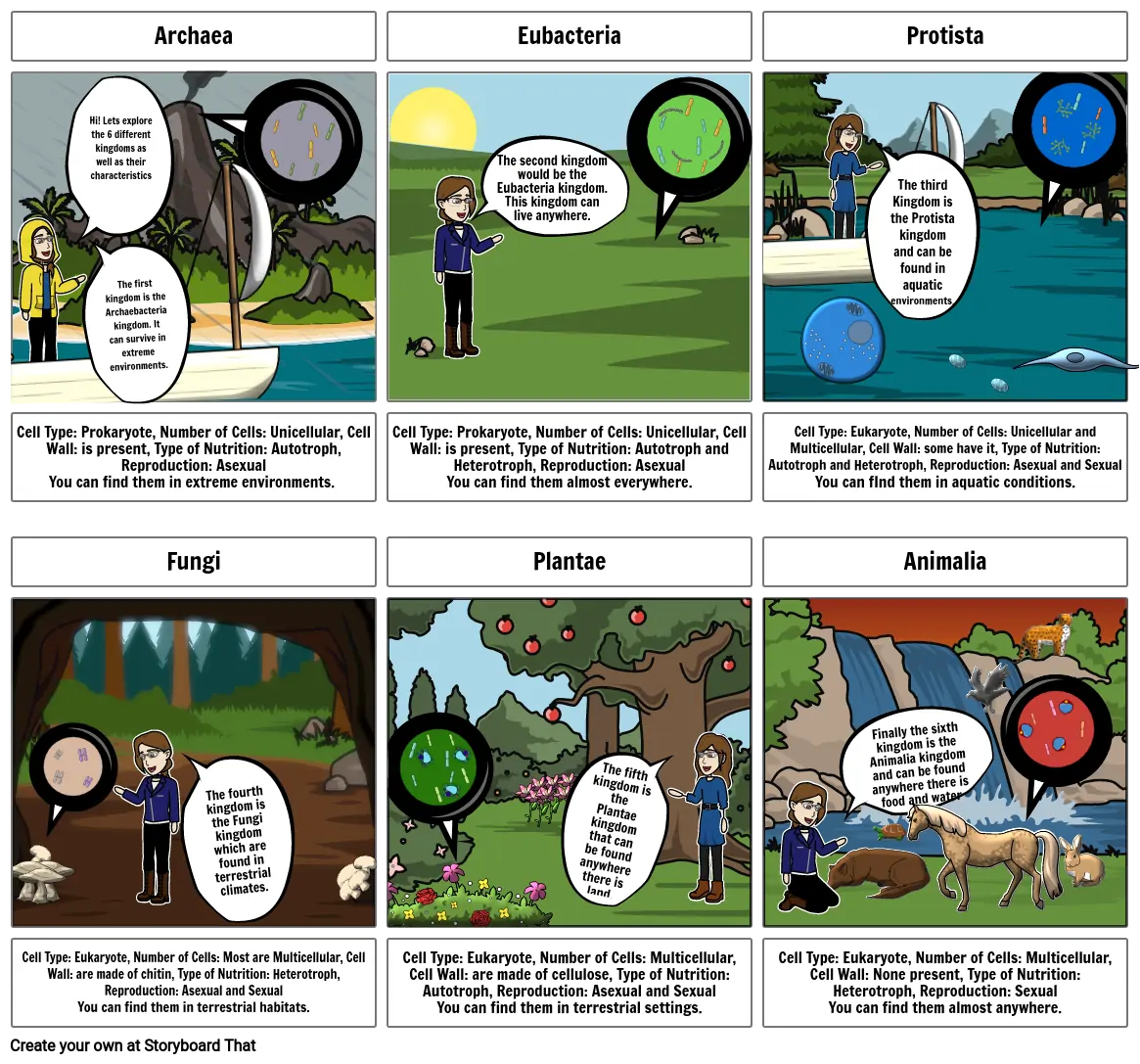Comparing 6 Kingdoms

Текст Раскадровки
- Archaea
- Hi! Lets explore the 6 different kingdoms as well as their characteristics
- Eubacteria
- The second kingdom would be the Eubacteria kingdom. This kingdom can live anywhere.
- saw
- Protista
- The third Kingdom is the Protista kingdom and can be found in aquatic environments.
- Cell Type: Prokaryote, Number of Cells: Unicellular, Cell Wall: is present, Type of Nutrition: Autotroph, Reproduction: AsexualYou can find them in extreme environments.
- Fungi
- The first kingdom is the Archaebacteria kingdom. It can survive in extreme environments.
- Cell Type: Prokaryote, Number of Cells: Unicellular, Cell Wall: is present, Type of Nutrition: Autotroph and Heterotroph, Reproduction: AsexualYou can find them almost everywhere.
- Plantae
- Cell Type: Eukaryote, Number of Cells: Unicellular and Multicellular, Cell Wall: some have it, Type of Nutrition: Autotroph and Heterotroph, Reproduction: Asexual and SexualYou can fInd them in aquatic conditions.
- Animalia
- Cell Type: Eukaryote, Number of Cells: Most are Multicellular, Cell Wall: are made of chitin, Type of Nutrition: Heterotroph, Reproduction: Asexual and SexualYou can find them in terrestrial habitats.
- The fourth kingdom is the Fungi kingdom which are found in terrestrial climates.
- Cell Type: Eukaryote, Number of Cells: Multicellular, Cell Wall: are made of cellulose, Type of Nutrition: Autotroph, Reproduction: Asexual and SexualYou can find them in terrestrial settings.
- The fifth kingdom is the Plantae kingdom that can be found anywhere there is land.
- Cell Type: Eukaryote, Number of Cells: Multicellular, Cell Wall: None present, Type of Nutrition: Heterotroph, Reproduction: SexualYou can find them almost anywhere.
- The
- Finally the sixth kingdom is the Animalia kingdom and can be found anywhere there is food and water
Создано более 30 миллионов раскадровок

